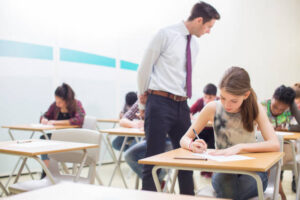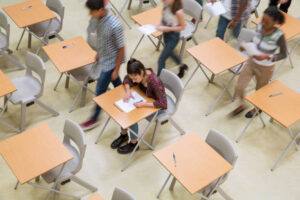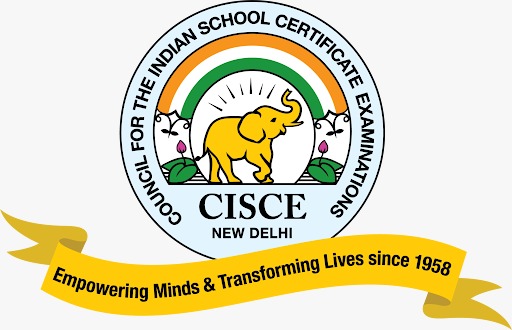Trigonometry tables have been a cornerstone of mathematics for centuries, helping students and professionals perform complex calculations with ease. Understanding how to use these tables can enhance your mathematical skills and simplify solving problems involving angles and ratios. Students at the best schools in Whitefield benefit from mastering trigonometry tables, as they provide a strong foundation for higher mathematical concepts. By learning to use these tables effectively, students can improve their problem-solving abilities and develop a deeper understanding of mathematical relationships. This guide will walk you through the fundamentals of using a trigonometry table efficiently.
What is a Trigonometry Table?
A trigonometry table is a mathematical tool that provides the values of trigonometric functions for specific angles. It includes key functions like sine, cosine, tangent, cosecant, secant, and cotangent. These values are essential for solving problems in geometry, physics, and engineering.
Components of a Trigonometry Table
To use a trigonometry table effectively, it’s important to understand its components. Here’s a breakdown:
Angles: The table includes angles measured in degrees (0° to 90°) or radians. Each angle corresponds to specific trigonometric values.
Trigonometric Ratios: The table lists the values for six trigonometric functions:
- Sine (sin): Ratio of the opposite side to the hypotenuse.
- Cosine (cos): Ratio of the adjacent side to the hypotenuse.
- Tangent (tan): Ratio of the opposite side to the adjacent side.
- Cosecant (csc): Reciprocal of sine.
- Secant (sec): Reciprocal of cosine.
- Cotangent (cot): Reciprocal of tangent.
Steps to Use a Trigonometry Table
Using a trigonometry table is straightforward once you understand its layout. Follow these steps to locate and use values:
Locating Angles
Start by finding the angle you need. Angles are typically listed in the first column, either in degrees or radians. For example, if you’re looking for sin(30°), locate 30° in the column.
Identifying the Ratio
Next, identify the trigonometric function you want to use, such as sine, cosine, or tangent. The table will have separate columns for each function.
Reading the Value
Once you’ve located the angle and function, read the corresponding value in the table. For instance, the sine of 30° is 0.5.
Practical Applications of a Trigonometry Table
Trigonometry tables are used extensively in various fields. Here are some practical applications:
Solving Triangles
Students often use trigonometry tables to solve problems involving right-angled triangles. By using the values of sine, cosine, and tangent, you can calculate unknown sides and angles.
Physics and Engineering
Trigonometry tables are essential for calculating wave properties, analyzing forces, and designing structures. For example, engineers use these tables to determine load distributions in bridges and buildings.
Mathematical Calculations
Understanding trigonometry is also beneficial when learning how to calculate percentage, as percentages often involve proportional reasoning, which is closely related to trigonometric principles.
Tips for Memorizing Key Values
While it’s impractical to memorize the entire table, knowing key values for common angles (0°, 30°, 45°, 60°, and 90°) can save time. Here are some tips:
- Use Mnemonics: Create memory aids to recall values. For example, remember “Some People Have Curly Brown Hair” to recall sine, cosine, and tangent values.
- Practice Regularly: Solve problems using the table to reinforce your memory.
- Draw Reference Triangles: Visualizing a 30°-60°-90° triangle can help recall values quickly.
Common Mistakes to Avoid
Here are some pitfalls to watch out for when using a trigonometry table:
- Misreading Values: Ensure you’re aligning the angle with the correct column for the function.
- Ignoring Units: Be mindful of whether the angle is in degrees or radians.
- Over-reliance on Tables: While useful, it’s essential to understand the underlying principles of trigonometry.
Tools to Complement Trigonometry Tables
Modern tools can enhance your understanding and usage of trigonometry tables. Consider using:
- Scientific Calculators: Quickly compute trigonometric values for any angle.
- Graphing Software: Visualize trigonometric functions for better comprehension.
- Online Tools: Many websites offer interactive trigonometry calculators and tables.
Conclusion
Learning to use a trigonometry table is essential for students, especially in Cambridge schools in Bangalore, where strong analytical skills are emphasized. This tool simplifies calculations and builds a solid mathematical foundation. By mastering key values like sin 30° = 0.5, students can solve problems more efficiently. Regular practice and recognizing patterns in the table improve recall. Using visual aids and apps can further enhance understanding. Trigonometry mastery supports academic success and future mathematical learning. Practicing consistently ensures confidence in solving complex problems
FAQs
The key elements include angles (in degrees or radians) and trigonometric ratios (sine, cosine, tangent, cosecant, secant, and cotangent).
Find the angle in the first column and read across the row to locate the corresponding value for the desired trigonometric function.
They are used for solving triangles, designing structures, analyzing forces, and calculating wave properties in physics and engineering.
Sine is the ratio of the opposite side to the hypotenuse, while cosine is the ratio of the adjacent side to the hypotenuse in a right triangle.
Yes, use mnemonics, practice regularly, and draw reference triangles to memorize values for common angles like 0°, 30°, 45°, 60°, and 90°.






